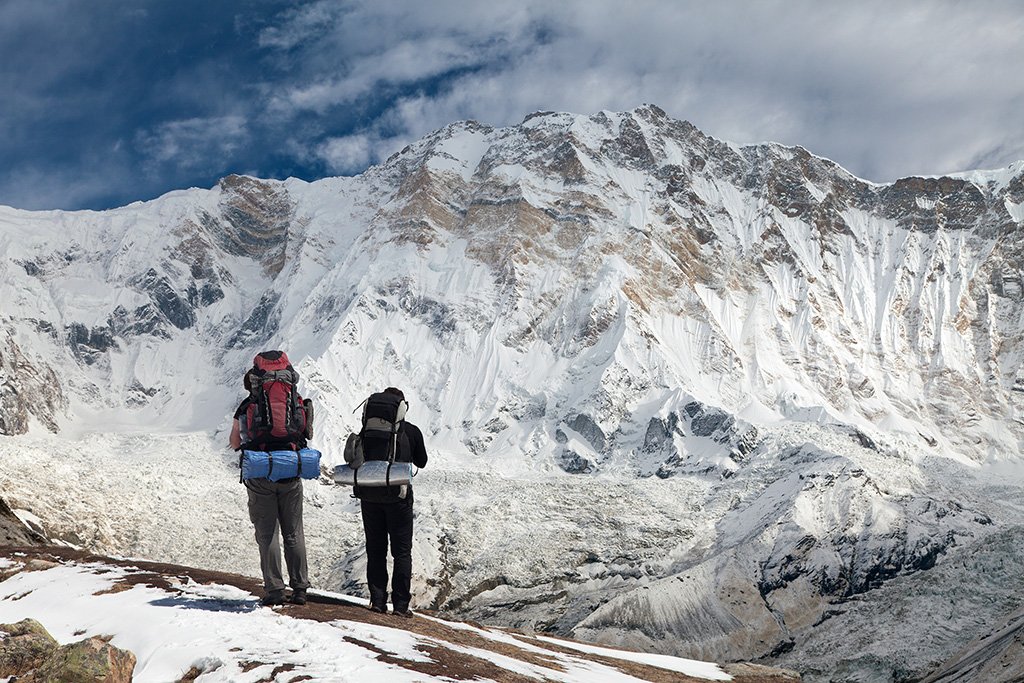
2 Oct 2019 HYN Himalayan Yoga Academy
The Himalayas are the highest mountain range in the world and have 9 out of 10 of the world’s highest peaks, including Mount Everest. Nepal is a beautiful nation blessed with natural beauty, including mountains, hills, and rivers, among other natural landscapes. The major part of the world-famous Himalayan Mountain Range lies in the northern range of Nepal as it boasts several top mountain peaks, including Mount Everest. Learn further about the Himalayas in Nepal.
Highest peak: Mount Everest at 29,031.7 ft. (8,848.86 m) is not only the highest peak in the Himalayas but the highest peak on the entire planet. Other famous peaks include K2, Kanchenjunga, Nanga Parbat, Annapurna, and Manaslu.
Glaciers: The Himalayas are the third largest deposit of ice and snow in the world, after Antarctica and the Arctic. There are approximately 15,000 glaciers located throughout the range. At 48 miles (72 km) in length, the Himalayan Siachen glacier is the largest glacier outside the poles. Nepal consists of the snow-fed river which is all thanks to the high mountains present in the roof of Nepal. That’s why Nepal is popular for White Water River Rafting around the world.
Climate: The Himalayas have a profound effect on the climate of the Indian subcontinent and the Tibetan Plateau. They prevent frigid, dry winds from blowing south into the subcontinent, which keeps South Asia much warmer than corresponding temperate regions in the other continents.
Ecology: The flora and fauna of the Himalayas vary with climate, rainfall, altitude, and soil. At high altitudes, the elusive and previously endangered snow leopard is the main predator. Its prey includes members of the goat family grazing on the alpine pastures and living on the rocky terrain, notably the endemic Bharal or Himalayan blue sheep. The Himalayan musk deer is also found at high altitudes. Hunted for its musk, it is now rare and endangered.
Pine forests are invading the oak forest in the Garhwal Himalayan region. There are reports of early flowering and fruiting in some tree species, especially rhododendron, apple, and box myrtle. The highest-known tree species in the Himalayas is Juniperus Tibetica located at 4,900 m (16,080 ft.) in Southeastern Tibet.
Culture: There is a complex blend of racial groups in the people of Nepal. The dominant castes of Hindus, namely Chhetri, Brahmin, and Thakur, along with others, speak Nepali. The Tamangs, Limbus, Magars, and Gurungs of Mongoloid strains dominate the middle hills and form organized groups of tribal hill farmers. The Sherpas from the Solo Khumbu region of the northeast are among the many groups of Bhutiyas that speak Tibetan dialects.
Religion: The main religions, which are practiced in the Himalayan region, are Hinduism and Buddhism. There is religious harmony between those two religions. They both speak Nepali in common.
Facts about Himalayas
- The Himalayas cover approximately 75% of Nepal.
- The Himalayan range is one of the youngest mountain ranges on the planet and consists mostly of uplifted sedimentary and metamorphic rock.
- The Nepalese call Mt. Everest “Sagarmatha” which can be translated as “Goddess of the Universe” or “Forehead of the Sky.”
- In 1953, Sir Edmund Hillary and Sherpa mountaineer Tenzing Norgay were the first people to successfully climb to the summit of Everest.
- Despite its name, the Snow Leopard – a Himalayan local – is most closely related to the Tiger.
Wanna do trekking in Nepal. Wanna see the Himalayas. You may join us.
#trekking #yoga #meditation #nepal #yogaretreats #yogainnepal #yogateachertraining #yogatreks #tours #yogaasana #yogacourses
